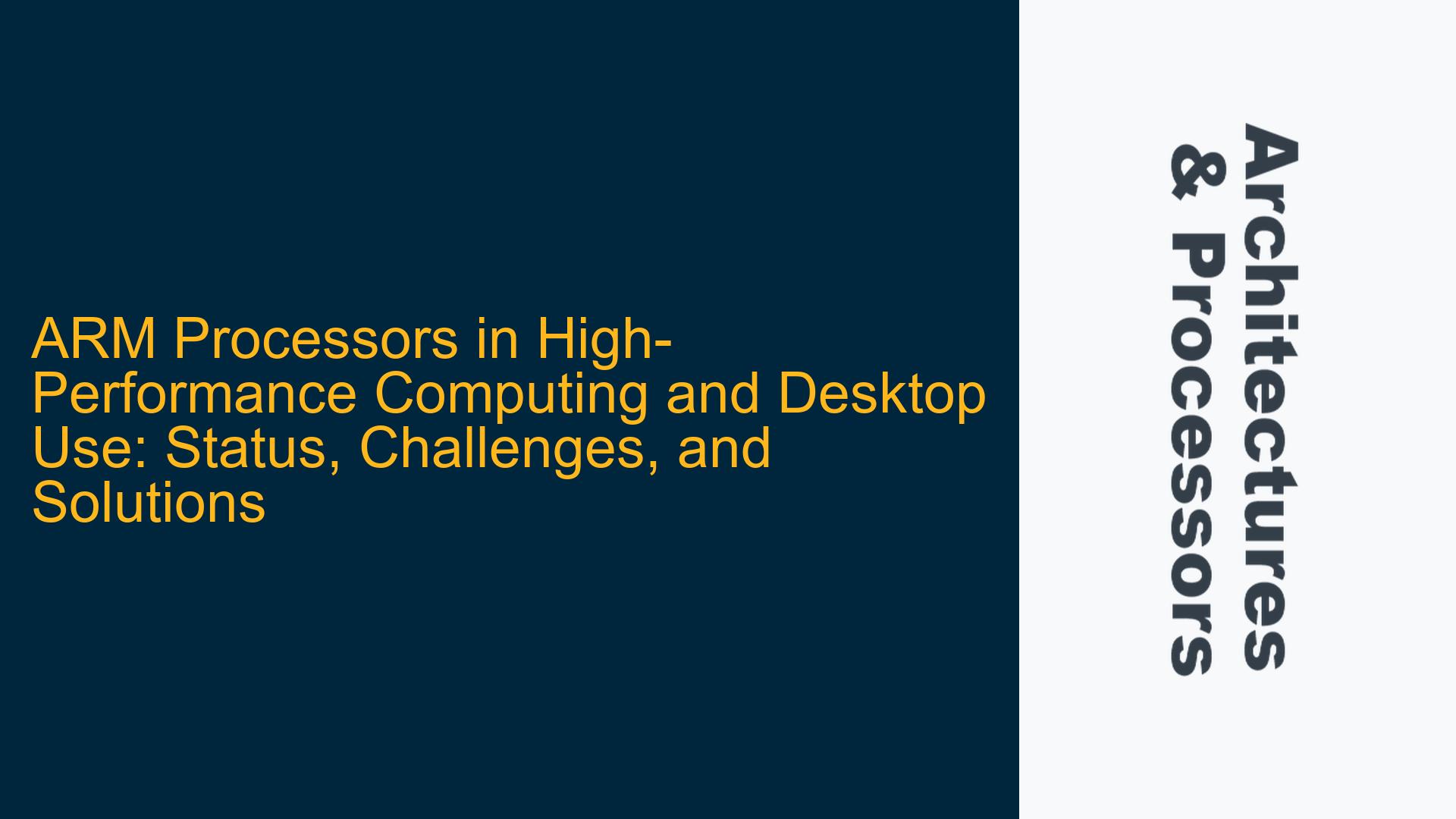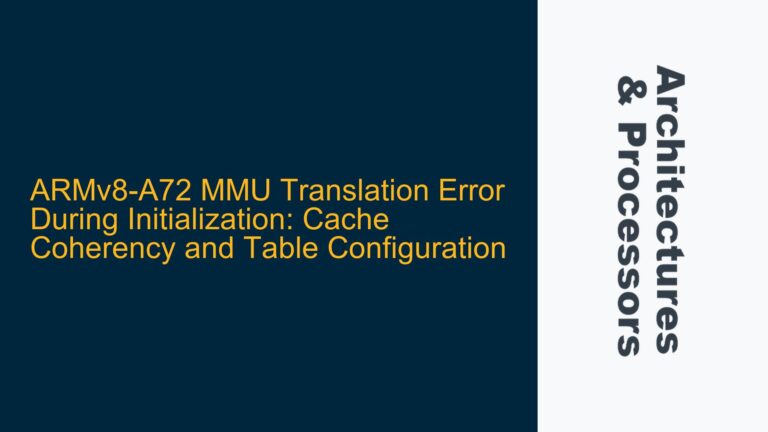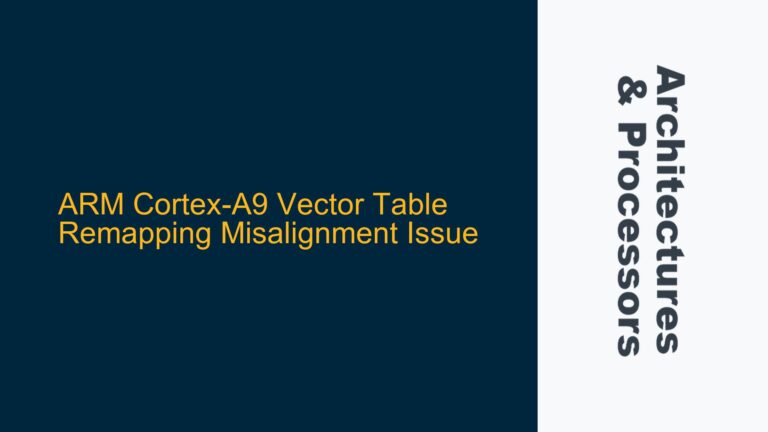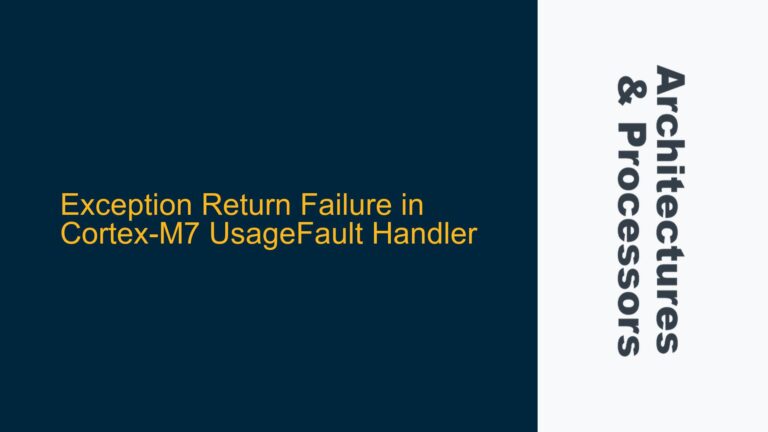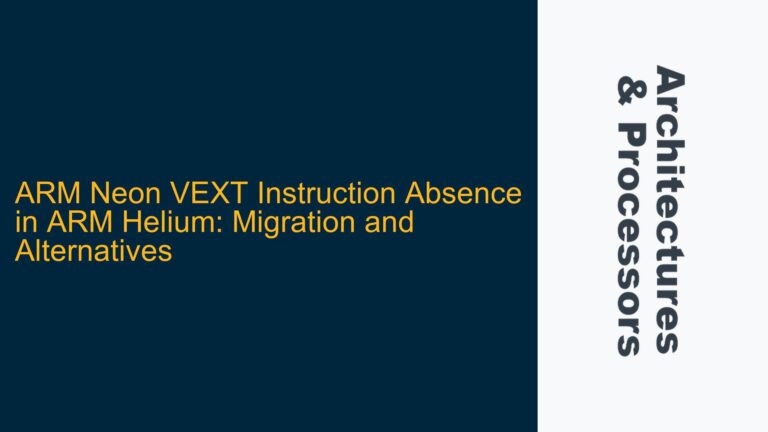ARM Processors in High-Performance Computing and Desktop Environments: Current Landscape
The adoption of ARM processors in high-performance computing (HPC) and general desktop use has been a topic of significant interest and debate. ARM architectures, known for their energy efficiency and scalability, have made substantial inroads into domains traditionally dominated by x86 processors. However, the transition is not without its challenges. This post delves into the current status of ARM processors in HPC and desktop environments, the underlying issues, and potential solutions to address these challenges.
ARM processors, such as the ARM Neoverse N1 and Fujitsu A64FX, have demonstrated impressive capabilities in HPC. For instance, the Fugaku supercomputer, powered by Fujitsu A64FX CPUs based on ARMv8.2A, achieved a benchmark score of 442 Pflop/s, making it the fastest supercomputer as of November 2021. Similarly, Amazon’s AWS Graviton2, based on ARM Neoverse N1, has shown competitive performance in cloud computing environments. On the desktop front, Apple’s M1 processor, a highly customized ARM-based chip, has garnered attention for its performance and energy efficiency, often outperforming equivalent x86 processors in benchmarks.
Despite these successes, ARM processors face several hurdles in broader adoption for HPC and desktop use. These include software compatibility, ecosystem maturity, and performance optimization challenges. The following sections explore these issues in detail and provide actionable insights for overcoming them.
Software Compatibility and Ecosystem Maturity: Key Barriers to ARM Adoption
One of the primary challenges in adopting ARM processors for HPC and desktop use is software compatibility. The x86 architecture has long been the standard for these domains, resulting in a vast ecosystem of software optimized for x86. While ARM processors have made strides in performance, the software ecosystem for ARM is still catching up. This discrepancy is particularly evident in legacy applications and specialized software used in HPC, which may not have ARM-compatible versions or may require significant porting efforts.
Another critical factor is the maturity of the ARM ecosystem. While ARM processors are widely used in mobile devices and embedded systems, the ecosystem for HPC and desktop environments is less developed. This includes not only software but also development tools, libraries, and frameworks. For example, while ARM-compatible versions of popular compilers like GCC and LLVM are available, they may not yet offer the same level of optimization and performance tuning as their x86 counterparts.
Moreover, the lack of standardization across ARM implementations can complicate software development. ARM licenses its architecture to various vendors, who then design their own custom implementations. This diversity can lead to inconsistencies in performance and behavior, making it challenging to develop software that runs optimally across different ARM-based systems. For instance, Apple’s M1 processor, while ARM-based, includes custom accelerators and features that are not present in other ARM implementations, necessitating specific optimizations.
Performance Optimization and Hardware-Software Co-Design: Strategies for ARM Success
To fully leverage the potential of ARM processors in HPC and desktop environments, performance optimization and hardware-software co-design are essential. ARM processors, with their RISC architecture, offer inherent advantages in terms of energy efficiency and scalability. However, realizing these advantages requires careful optimization of both hardware and software.
One area of focus is memory hierarchy and cache management. ARM processors typically feature multiple levels of cache, and effective utilization of these caches is crucial for achieving high performance. Techniques such as cache-aware algorithms, data prefetching, and efficient use of memory barriers can significantly enhance performance. Additionally, ARM’s support for SIMD (Single Instruction, Multiple Data) instructions, such as NEON and SVE (Scalable Vector Extension), can be leveraged to accelerate computationally intensive tasks.
Another critical aspect is power management. ARM processors are designed with energy efficiency in mind, but achieving optimal power-performance trade-offs requires fine-tuning. Dynamic voltage and frequency scaling (DVFS), power gating, and other power management techniques can be employed to balance performance and energy consumption. This is particularly important in HPC environments, where energy efficiency translates to lower operational costs.
Hardware-software co-design is also vital for maximizing the performance of ARM processors. This involves designing software with the specific capabilities and limitations of the hardware in mind. For example, understanding the pipeline structure, branch prediction, and out-of-order execution capabilities of a particular ARM implementation can inform software design decisions that improve performance. Similarly, leveraging hardware accelerators, such as those found in Apple’s M1 processor, can provide significant performance boosts for specific workloads.
Implementing ARM in HPC and Desktop Environments: Practical Considerations and Solutions
Implementing ARM processors in HPC and desktop environments requires addressing several practical considerations. These include system design, software porting, and performance tuning. Below, we outline key steps and solutions for successfully deploying ARM-based systems in these domains.
System design is a critical first step. When designing an ARM-based HPC cluster or desktop system, it is essential to consider the specific requirements of the target workloads. This includes selecting the appropriate ARM processor, memory configuration, and interconnect technology. For example, the Fujitsu A64FX processor used in the Fugaku supercomputer features high-bandwidth memory (HBM) and a Tofu interconnect, which are crucial for achieving its high performance. Similarly, Apple’s M1 processor integrates unified memory architecture (UMA), which reduces latency and improves performance for graphics and machine learning workloads.
Software porting is another important consideration. Porting existing software to ARM may require modifications to the codebase, particularly for applications that rely on x86-specific features or optimizations. Tools such as the ARM Performance Libraries (ARMPL) and ARM Compiler can assist in this process by providing optimized libraries and compilation tools for ARM architectures. Additionally, containerization and virtualization technologies, such as Docker and QEMU, can facilitate the deployment of ARM-compatible software environments.
Performance tuning is essential for achieving optimal performance on ARM-based systems. This involves profiling and analyzing the performance of applications to identify bottlenecks and areas for improvement. Techniques such as loop unrolling, vectorization, and parallelization can be employed to enhance performance. Additionally, leveraging ARM’s performance monitoring units (PMUs) can provide insights into hardware behavior and guide optimization efforts.
In conclusion, while ARM processors offer significant potential for HPC and desktop environments, realizing this potential requires addressing challenges related to software compatibility, ecosystem maturity, and performance optimization. By adopting a strategic approach to system design, software porting, and performance tuning, it is possible to harness the benefits of ARM architectures and achieve competitive performance in these domains. As the ARM ecosystem continues to evolve, we can expect to see further advancements and broader adoption of ARM-based systems in HPC and desktop environments.
